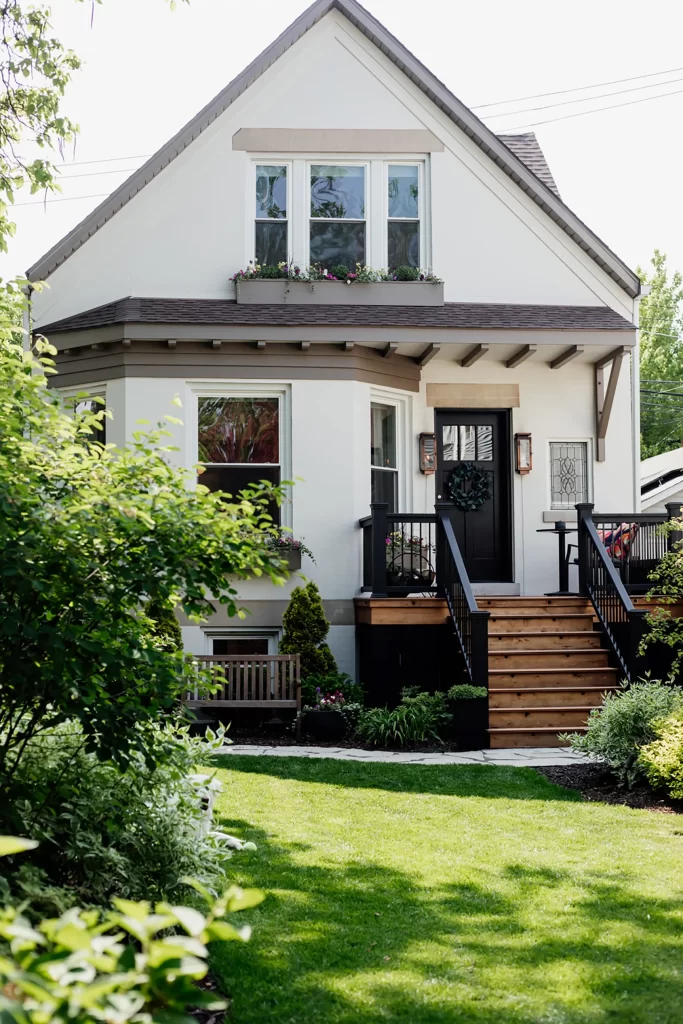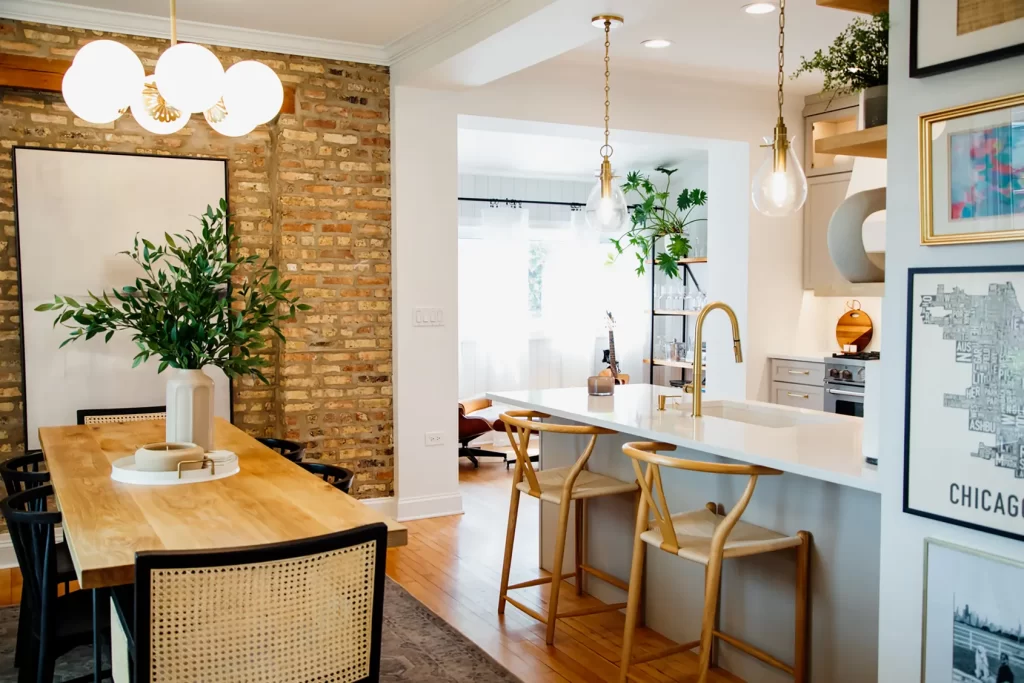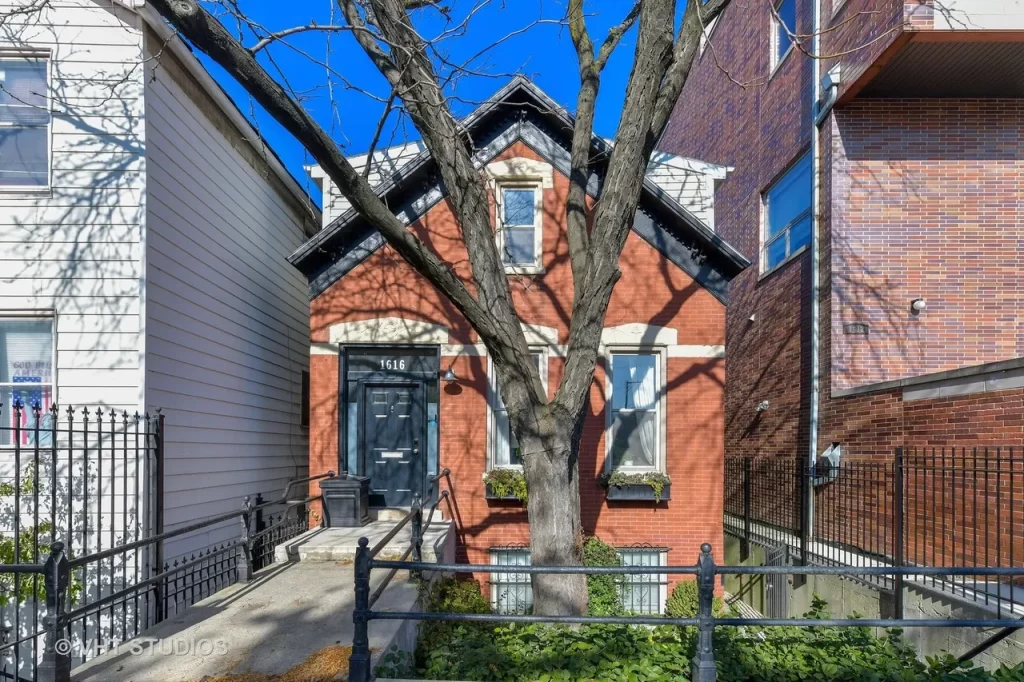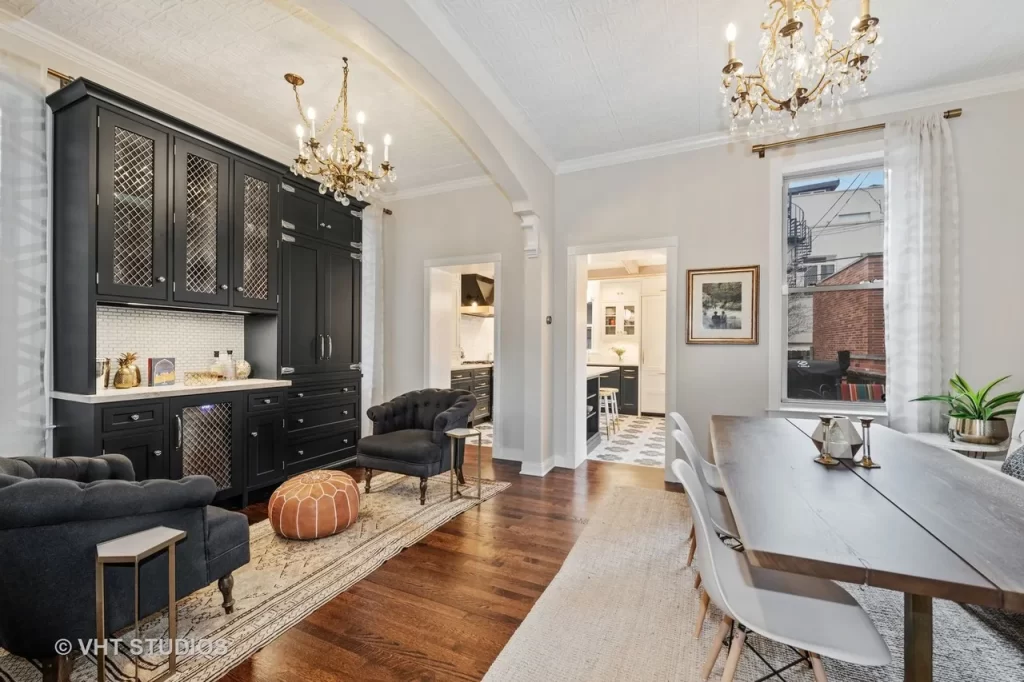A Familiar Sight—Now Gone
Not long ago, a small house on my regular dog walk route came down. It was a classic Chicago worker’s cottage, tucked between two much taller brick buildings. The steep roof, fish-scale shingles, and tidy front porch made it stand out in the best way—simple, charming, and full of character.
I felt genuinely sad to see it go.

Over time, I got used to the empty lot and the construction fence. It faded into the background, like so many other changes on the block. But this week, I noticed a sticker had been placed on the permit: “Stop destroying Chicago.’ That quiet little message made me pause. One by one, these homes keep disappearing. And with each one, we lose a small piece of the city’s story. As someone who clearly loves old homes—as evidenced by the Victorian I’ve been lovingly updating in Sheboygan for years—this felt especially personal. These places deserve a second look before they’re gone.
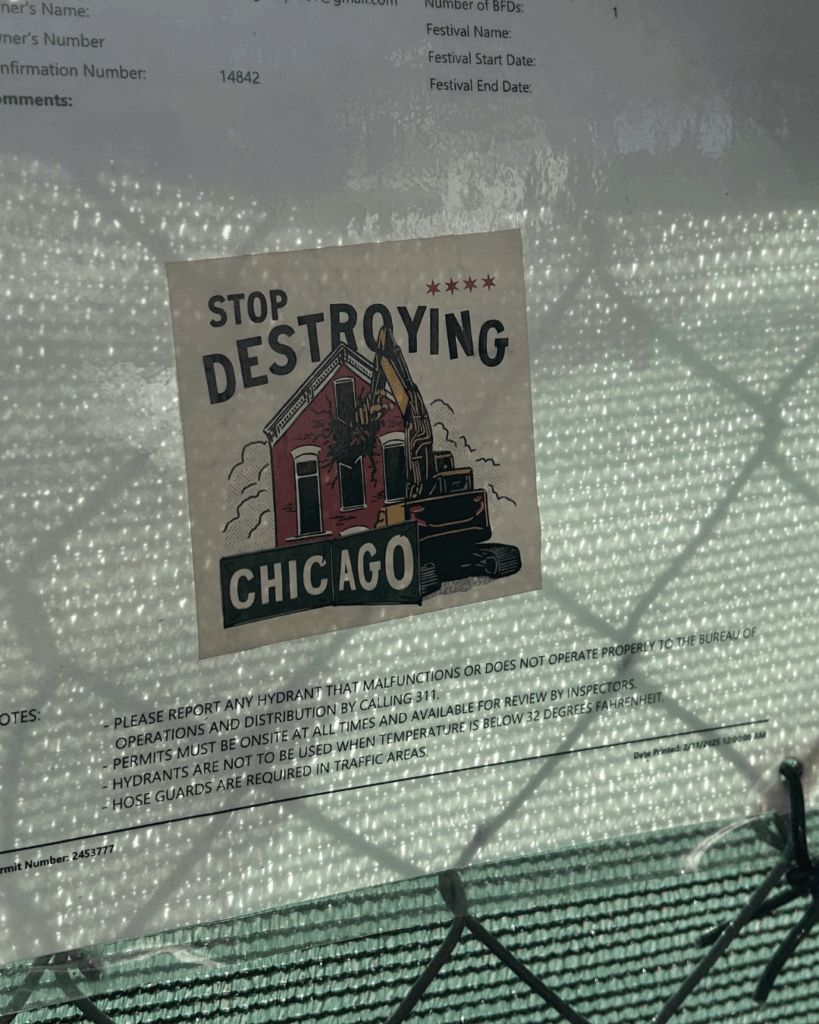
What Defines a Worker’s Cottage?
Builders started constructing worker’s cottages in the late 1800s and early 1900s to house Chicago’s growing working class after the Great Fire. These homes met the moment—affordable, efficient, and easy to build on narrow city lots.

Most cottages follow a similar layout: a narrow footprint, steep gabled roof, one-and-a-half stories, and a simple floor plan. Builders used either brick or wood and placed the homes close to the sidewalk. Despite their modest size, they often included thoughtful details like arched windows, ornate porch trim, and tall ceilings.

These homes prioritized function but still delivered plenty of charm.
Why Are So Many Disappearing?
Today, many worker’s cottages need updates. Some owners choose to replace them rather than restore them. In many neighborhoods, land holds more value than the home sitting on it—making new construction more attractive.
Between 2002 and 2017, Logan Square lost around 5% of its buildings. Nearly half of those were worker’s cottages. Avondale and other nearby areas show similar patterns.

Developers often build larger homes in their place—complete with more square footage, modern systems, and updated amenities. These changes can be beneficial, especially for growing families. However, they also reshape the feel and rhythm of the block.
Why These Homes Still Matter
Worker’s cottages aren’t just homes—they reflect a chapter of Chicago’s past.
Immigrants, tradespeople, and working-class families lived in these homes while helping build the city around them. Their houses served a purpose but still brought beauty to everyday life.
These homes also bring balance to our streets. Their smaller scale offers a break from taller, bulkier new builds and helps maintain the visual rhythm of classic Chicago neighborhoods.
A Moment to Appreciate What’s Still Here
That sticker I saw earlier this week wasn’t dramatic or loud. But it worked. It pulled me out of autopilot and made me look again. We still have time to notice what’s here—and to talk about what we want our neighborhoods to look like in the future.
So next time you pass one of these small, steep-roofed homes, take a moment to appreciate it. It might not make headlines, but it helped shape the soul of this city.
There are success stories, too—worker’s cottages that have been restored instead of removed. Some of my favorites are this beautifully renovated home in Logan Square, featured on Apartment Therapy and this gem in Wicker Park. They’re proof that old homes can be both beautiful and livable—when given the chance.

